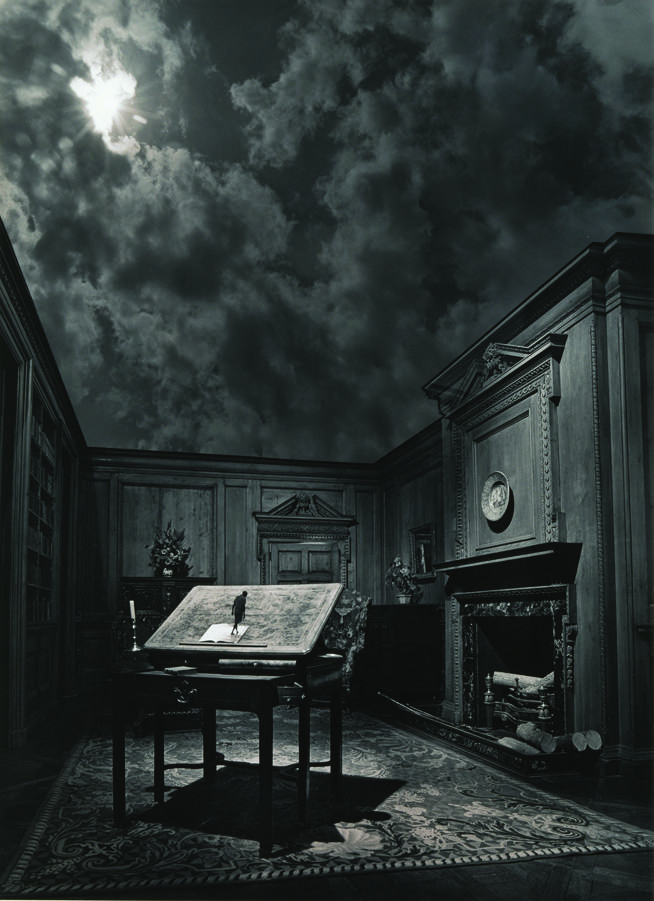Manipulating Reality: How to Fake Photography
December 12, 2012
“Every photograph is a fake from start to finish, a purely impersonal, unmanipulated photograph being practically impossible.”

So said Edward Steichen, an early 20th century American photographer featured in “Faking It: Manipulated Photography Before Photoshop,” a new exhibit at The Metropolitan Museum of Art (the Met). The gallery, which features work ranging from 1800s family portraits to contemporary magazine covers, offers a unique glimpse into the time before digital photography, a time before retro filters and surreal imagery were only a tap or click away.
The exhibit is enlightening, if not overwhelming, when approached from a modern sensibility. Many of the techniques on display—slimming waistlines, removing blemishes, adding people or objects into scenes—are widely used today, making the images seem rather ordinary to the 21st century onlooker. However, rather than highlighting the content of the photos, the exhibit grounds itself in the technique and motive behind their manipulation, creating an engaging and provocative narrative to the images on display.
Mia Fineman, curator of photography at the Met, stated that the intention of the exhibition is to express “how photographic manipulation has changed from the 19th to the 20th and 21st centuries. Are there things that can be done digitally now that couldn’t be done before? What are the different approaches? What are the reasons behind the manipulation?”
The answers to these questions manifest themselves through the images, the earliest being a portrait from 1850 titled, “Young Girl with Hand on Shoulder.” The image is a simple portrait of an anonymous young woman, manipulated through the addition of subtle touches of color—a radical departure from the standard black and white photos of the era. Her blouse is infused with touches of light green and blue, while her face, ghostly white, has the impression of rosy cheeks.
When the medium of photography was first established in the 1800s, critics questioned whether it could truly capture the essence of human sight. As Fineman wrote in the exhibit’s accompanying book, “Many of the early instances were, in fact, efforts to compensate for the new medium’s technical limitations—specifically, its inability to depict the world the way it looks to the naked eye.” Manipulation, in this vein, allowed photographers to document reality in increasingly accurate and thought provoking ways.
In 1856, French photographer Gustave Le Gray captured a series of marine views that became an international success in galleries in London and Paris. Onlookers were immediately taken aback by the depth of the images and how he was able to create such detail in the breaking waves and clouds drifting above. Le Gray’s secret, which he took to the grave, was that the image came from two separate negatives, one capturing the waves, while the other captured the clouds. By manipulating the two images to his liking, Le Gray was able to create a photograph that successfully conveys the sensation of looking out over a marine landscape.
While many photographers simply wanted to portray a more perceptive image, others had different intentions, manipulating images as a powerful propaganda tool. “Dirigible Docked on Empire State Building, New York,” a famous image of a zeppelin docked at the tip of New York’s most famous building is an example of this. No airship ever docked at the top of the building, but it was promoted as a way for weary European travellers to dock and reach street level within minutes. Dangerous winds prevented this image from ever coming to fruition, but the attention did allow building investors to add nearly 200 feet to the top of the building, making it the largest in the world.
In 1941, Alexander Zhitomirsky, working for the Soviet propaganda ministry, created posters and pamphlets that would be dropped from Soviet fighter planes as a way to demoralize German soldiers. In “The Corporal is Leading Germany into a Catastrophe,” Zhitomirsky depicts a larger-than-life portrait of Otto Von Bismark condescendingly pointing down at Hitler. The implication is that Hitler, who never rose above the rank of corporal, did not have the credentials to lead the German army as Bismark did in the mid-19th century.
While the technology has changed, this sort of manipulation still exists, especially in the political sphere. During the election, a photo of Mitt Romney’s family wearing T-shirts that spelled out “Romney,” was rearranged to read “R-Money.” After Romney’s “binders full of women” gaffe, the Internet exploded with memes and images of Romney holding literal binders of women. Separate images, combined in order to serve a political agenda, effectively discrediting his campaign.
“Faking It: Manipulated Photography Before Photoshop” is based on this very sentiment. Technologies have and will continue to change, but the way people think and use these new technologies will likely reflect the attitudes of the past. It is easy to take our technologies for granted, but exhibits like this force us to put our iPhones and digital cameras in perspective.
The exhibition will run through Jan. 27 at the Met.









